Outdoor Socket Installation Cost
Last updated 16th April, 2025
Are you interested in the cost of having an outdoor socket fitted?
This article looks into the various costs of having an outside socket fitted.
We delve into the different types of outdoor plug sockets available, how much it will cost to have an external socket installed and if you could carry out this type of work yourself.
Let's get started below!
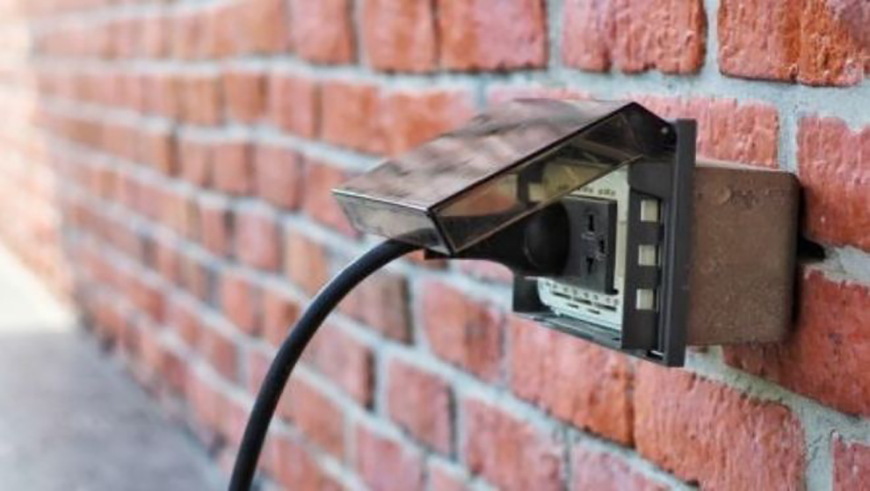
How Much Does It Cost To Install an Outside Socket?
The average cost of fitting a single outside socket is £60 to £275, or for an outside double socket, £60 to £290. The cost would be about £115 to £255 for a socket with a timer or £55 to £285 for an RCD outdoor socket.
As for a double outdoor socket with junction boxes, an installation would cost around £160 to £570 with the price landing about £265 to £815 to have multiple outdoor sockets with junction boxes installed.
The cost of installing an outdoor socket will depend not only on the size and type of socket but also on ease of access, the materials used, and your property's location.
As for property location, this is a cost factor given that labour rates vary across the UK.
Outside Socket Installation Prices
| Job Description | Total Cost |
|---|---|
| Single Outdoor Socket | £60 - £275 |
| Double Outdoor Socket | £60 - £290 |
| Socket with a Timer | £115 - £255 |
| Socket with an RCD | £55 - £285 |
| Double Outdoor Socket with Junction Boxes | £160 - £570 |
| Multiple Outdoor Sockets with Junction Boxes | £265 - £815 |
Table of Contents
- How much does it cost to install an outside socket?
- Labour cost to install outdoor socket
- What impacts the cost to install outdoor sockets?
- What does fitting an outside socket involve?
- DIY outdoor socket installation
- Building regulations for outdoor socket installations
- Planning permission for outdoor socket installations
- FAQs
- How to find and hire an outdoor socket installer
- Sources
Cost of Outdoor Socket Materials
We'll now discuss the supply only costs specifically. On average, the single outdoor socket cost is £10 to £35, with the price of a double outdoor plug socket landing between £10 and £50.
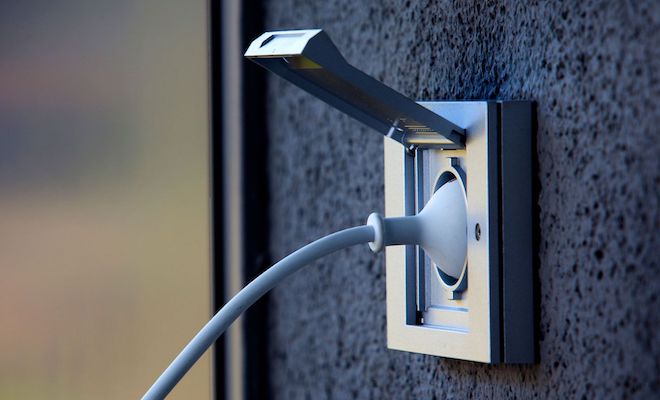
A socket with a timer tends to feature a price tag of £50 to £60, while you'd pay around £20 to £60 for a socket with an RCD.
To have a double outdoor socket with junction boxes installed is likely to cost £60 to £90, while multiple outdoor sockets with junction boxes will cost around £65 to £95.
Additional Outdoor Socket Installation Costs
There are a range of added jobs you may wish to pay for when having an outside socket installed. Let's delve into some examples.
Consumer Unit Replacement Cost
If your consumer unit (or fuse box) is outdated, it might be worth investing in a new one before adding any more electrical sockets into your system.
Depending on the number of circuits required, the average cost of replacing your fuse box is between £500 and £600.
Bear in mind that a new consumer unit is classed as a major piece of electrical work and must be certified by a professional. They will provide an Electrical Installation Certificate (EIC) to prove the work has been properly installed.
If you make major changes to your home's electrics, you may also want to have a full electrical safety check (this is required if you're renting out the property but is optional for homeowners). For this, you should factor the price of an EICR certificate into your budget. This will usually cost between £125 and £300.
Garden Lighting Installation Cost
If your garden needs extra lighting, it can be a good idea to combine this with an outdoor socket installation.
Every home is different, but garden lighting installation prices for wired lights start from around £80 for basic floodlights.
More complex installations such as landscape lighting to illuminate certain areas of your garden can cost anywhere from £80 to £1,100.
Outside Security Lights
Upgrading your external lighting can also help with your home's security, and there are a range of security lights to choose from.
The cost of outside security lights will vary depending on which type you choose. On average, to have a motion sensor light fitted would cost around £90 to £150.
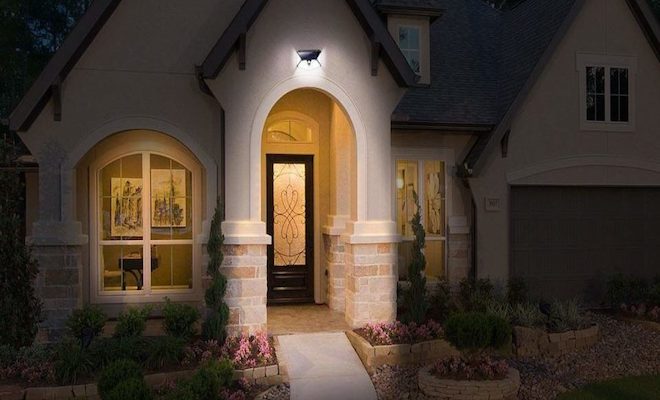
You'd pay about £80 to £180 for floodlights, anywhere from £80 to £1,100 for landscape lights, or £80 to £500 for spotlights.
CCTV Installation Costs
There are also a wide range of cameras available for home use, with the typical CCTV installation cost ranging from £60 for a single camera to £1,900 for a whole CCTV system.
For example, a dome camera may cost £60 to £80, while bullet or c-mount CCTV tends to cost about £100 to £140.
For a more sophisticated pan, tilt, & zoom camera, expect to pay roughly £150 to £190. Network CCTV usually costs between £140 and £180.
You'd likely pay £100 to £170 for wireless CCTV, £100 to £180 for infrared CCTV, or £130 to £180 for high-definition CCTV.
Outdoor Socket Cost Breakdown Calculator
Individual costs of hiring an electrician to install a double outdoor socket – Total Cost: £175
Materials
£30
Labour
£145
Waste Removal
£0
Labour Cost to Install Outdoor Socket
The labour cost is part of the total cost alongside that of the actual socket.
It would land around £50 to £240 for a single or double outside socket installation, £65 to £195 for a socket with a timer, or £35 to £225 for a socket with an RCD.
Labour costs would be around £100 to £480 to install a double outside socket with junction boxes, or £200 to £720 to have multiple outside sockets with junction boxes installed.
The setup will take less than half an hour, while the work itself could take anywhere from one to six hours, depending on the job's specifics.
In general, such as in the case of a single or double outside socket installation, it will take around an hour or two.
Electrician prices and timeframes can be influenced by the ease of access, the state of the work area, and of course, the type of installation.
What Impacts the Cost to Install Outdoor Sockets?
Various factors can shape the cost of fitting an outdoor socket. Let's break down some of the most important cost factors.
Type of Socket
The socket type is relevant given that the material cost, at least, will vary. Of course, the labour cost can sometimes also vary given that some sockets are particularly more challenging to install than others.
Size of Sockets
The larger the socket, the higher the material cost. For instance, double sockets cost twice as much as a single socket, or sometimes even more.
Electrical Work
The specifics of the electrical work are also relevant since they can directly impact how complex the job will be. The more difficult the work is, the more the labour cost will be if the work takes longer.
Ease of Access
As with the complexity or lack thereof of the electrics, ease of access is also important since labour costs are likely to be higher if it is difficult for the electrician to access the installation point.
Property Location
Where you live could also affect the overall outdoor socket installation cost.
Electricians tend to charge higher rates in the southeast and London in particular, but lower rates than the national average in regions such as Scotland, the north of England, and Northern Ireland.
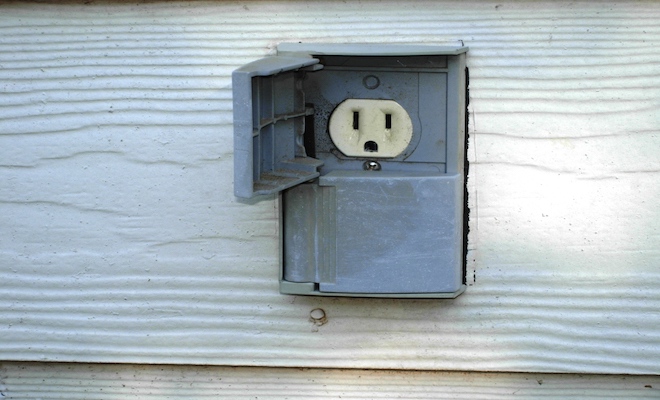
To give some examples, an electrician in Blackpool is likely to charge about £27 to £31 per hour, with electricians in Dundee or Exeter charging approximately £28 to £32 an hour, but an electrician in Leicester might charge £38 to £42 per hour.
You should expect to pay an increased labour rate in London, as tradespeople in the capital tend to cost around £46 to £50 per hour.
What Does Fitting an Outside Socket Involve?
We'll now look at the range of steps involved in installing an outside socket.
1. Hiring an Electrician
Since any outdoor electrical socket installation must be undertaken by a professional, you'll need to find a suitable electrician.
It's best practice to seek three quotes first and be sure to check if your chosen contractor or company is fully registered and insured.
2. Turn Off The Power
Electricity to part or all of your home will need to be turned off on the day of your outdoor socket installation.
This will be taken care of by your electrician, and they'll judge how much of your electricity needs to be switched off.
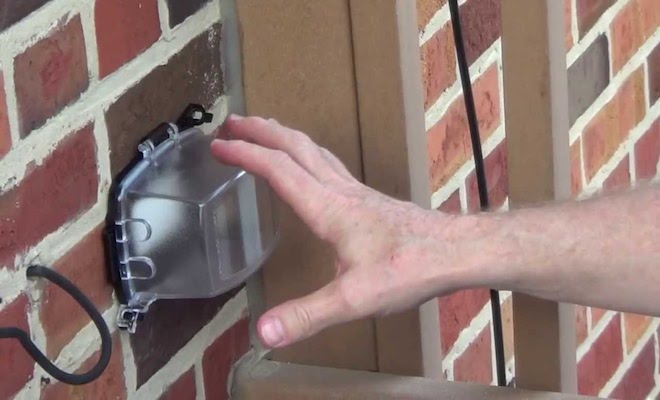
3. Installation
Fitting an outdoor socket can be done in two ways:
- Fit the socket to an existing electrical ring inside your property.
- Install a new electrical ring for the outdoor socket.
Your electrician will be able to advise which of these options is best for your exterior socket.
It may depend on whether a hole can be drilled to connect an internal socket ring with the new external socket.
If this can't be done or your electrician believes it will be safer to add a new circuit, a cable will be run straight from the consumer unit to the external socket. This may be fed through walls or attached to the wall to keep it isolated.
4. Finalisation
Once the wiring is complete and the box is fixed to the wall, the sockets can be wired in.
This should be the final step before the electrician turns the power back on, assuming there have been no problems during the installation.
DIY Outdoor Socket Installation
Unfortunately, this is not a DIY job.
Only a certified electrician should install an outside socket, and they may or may not use specific safety equipment during the installation.
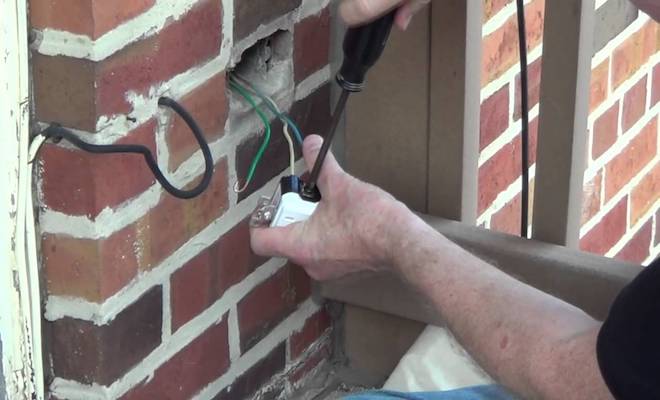
As with any electrical work, it's important to listen to any instructions from your electrician during the fitting process. This will ensure the safety of everyone.
Building Regulations for Outdoor Socket Installations
In regards to building regulations, any electrical work must follow the rules laid out in BS 7671.
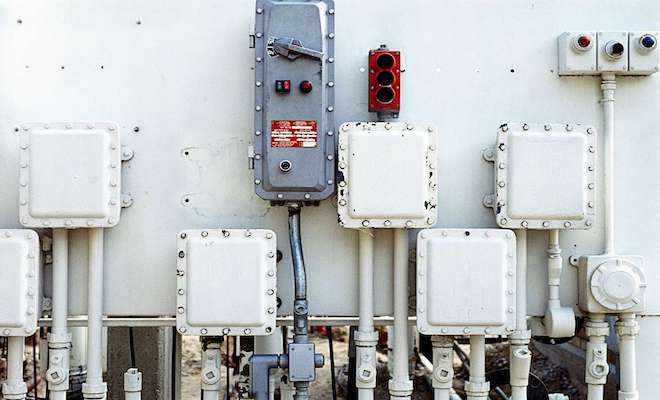
It should be noted that the Planning Portal is specific to England and Wales, so regulations could differ in Northern Ireland and Scotland.
Outdoor socket installation is not generally considered notifiable work, and only under specific circumstances would you need to apply for building regulations approval. In that case, it could cost between £300 and £500.
Planning Permission for Outdoor Socket Installations
In terms of planning permission approval, this is generally not required to install an outdoor socket. If you live in a listed building, however, it may be necessary.
If you are unsure, you should contact your local planning authority. Again, Planning Portal provides further information.
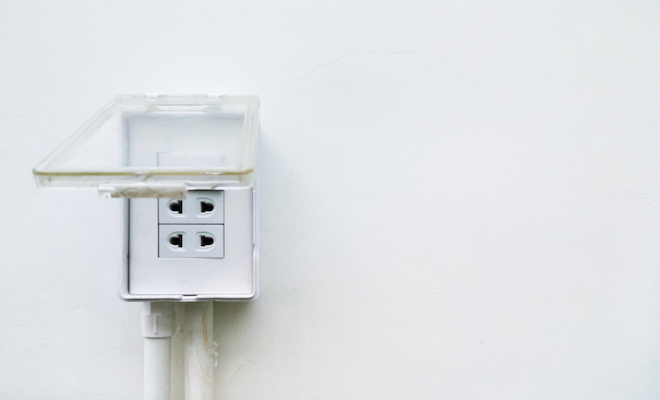
Where a planning permission application is needed, it tends to cost £200 to £500. You may be waiting two months or more to receive a response.
FAQs
The safety of your new outdoor sockets should be discussed with your electrician. Discuss whether the socket is high enough to avoid any minor flooding or surface water issues. You should also regularly check your outdoor sockets for damage or water ingress.
In addition, any outdoor socket installation will need to ensure there is Residual Current Device (RCD) on the circuit. This reduces the risk of electric shocks from moisture getting into the external socket.
How to Find and Hire an Outdoor Socket Installer
As any outdoor socket installation must be completed by a professional, you'll need to hire a qualified electrician to handle this job.
The average electrician price per hour across the UK as a whole is £40, although this will vary depending on where you live.
Consider the following points when searching for an electrician:
- They need to be both qualified and experienced in electrical work.
- They should be able to produce qualifications or accreditations on request.
- They have insurance coverage to protect both you and them while they complete the work.
If you're uncertain whether an electrician is fully accredited, you can search the Registered Competent Person Electrical list. This helps you choose an electrician who's registered with a Government-approved scheme for your peace of mind.
Bear in mind that fitting an outdoor socket can be a minor job for an electrician, and they may prefer to take jobs that combine multiple tasks. If this is the case, you can look at different electrical jobs around the home that could be completed at the same time.
It's good practice to get multiple quotes for any electrical job and an outdoor electrical socket installation is no exception to this. Obtain at least three quotes before committing to having any electrical work done.
Sources
https://www.planningportal.co.uk/applications/building-control-applications/building-control/approved-documents/part-p-electrical-safety/approved-document-p
https://www.planningportal.co.uk/permission/common-projects/electrics/planning-permission










